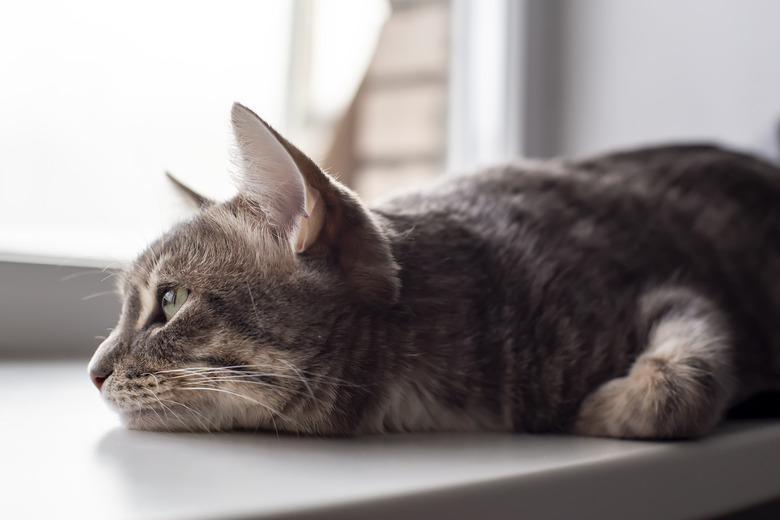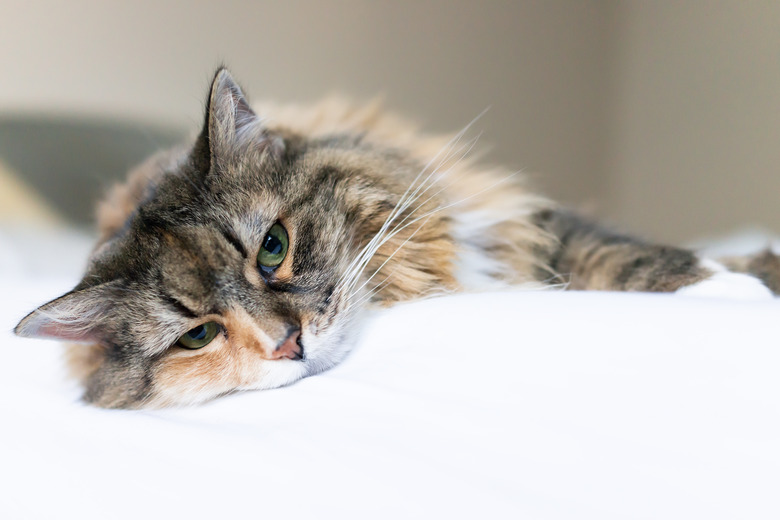How To Heal Open Wounds On Cats
Cats are mostly docile creatures, spending hours snoozing and grooming themselves in a patch of sunlight. But felines can also occasionally become wounded, either from a bite wound, by fighting with another animal, or getting caught in prickly bushes, particularly when they're out of sight or spend a lot of time outdoors. But heading to the vet's office every time your cat has a small paw wound may not be necessary. The fix: stocking a first-aid kit for kitties that includes liquid bandage for cats.
Keep in mind that the size and depth of the injury will determine whether or not you need professional care for your animal (even the best liquid bandage for dogs and cats won't be enough for certain gashes). For large or deep cuts, apply pressure to staunch the bleeding and, if it's an extremity like a paw wound, apply a tourniquet — and then take your pet to an emergency veterinarian's office.
And if you suspect your cat has been bitten by another animal, whether it's a domesticated cat or animal from the wild, a trip to the vet is also in order. Even though a wound like this may seem small and easy to care for, a vet should assess it in case it requires stitches and because of the possibility that rabies could have been transmitted by the other animal's saliva.
For small open wounds, here's how to treat your cat at home:
- Start off clean. To keep germs at bay, wash your hands well and wear rubber medical gloves if you own them. You'll also want to keep a towel and even a friend nearby to help restrain your cat if necessary. If the cat rebels, wrap him in the towel completely, including his head, exposing only the injury.
- Trim and flush the wound. For smaller wounds, trim the hair away from the edges using small cuticle scissors. Clip next to the injury and proceed outward and then gently flush the wound with warm, clean tap water.
- Use liquid bandage for cats. Let the wound soak for a few minutes and then remove any dirt, debris, or a foreign object if you spy one with a sterile pad or cloth. Dry the area thoroughly and then dab on a bit of antibiotic ointment. After a few minutes, apply a layer of liquid bandage for cats.
- Check the wound regularly. Inspect the wound and clean it as needed using tap water. After drying the wound well, you can also replace the old bandage with a fresh one. Continue this care for two or three days.
- Apply pet-friendly meds only. Do not douse a fresh wound with peroxide as it may damage tissue. Always read labels carefully and be certain that the products you're using are non-toxic to cats and indeed made for pets. Don't be tempted to use a liquid bandage made for people (if you don't have a liquid bandage for animals, send someone to the pet store or go without it).
- Nix human bandages. It might seem like an easy solution, but it's not safe to place a human bandage on your cat's small wound. Bandages made for humans could make your cat sick if he licks it or tries to chew it.
- Call your vet. Even if the wound seems small and treatable at home, it never hurts to call your vet and check in with them about how to proceed. They may offer some tips and advice for treating the wound at home, or they may feel it's necessary for you to bring your cat in.

